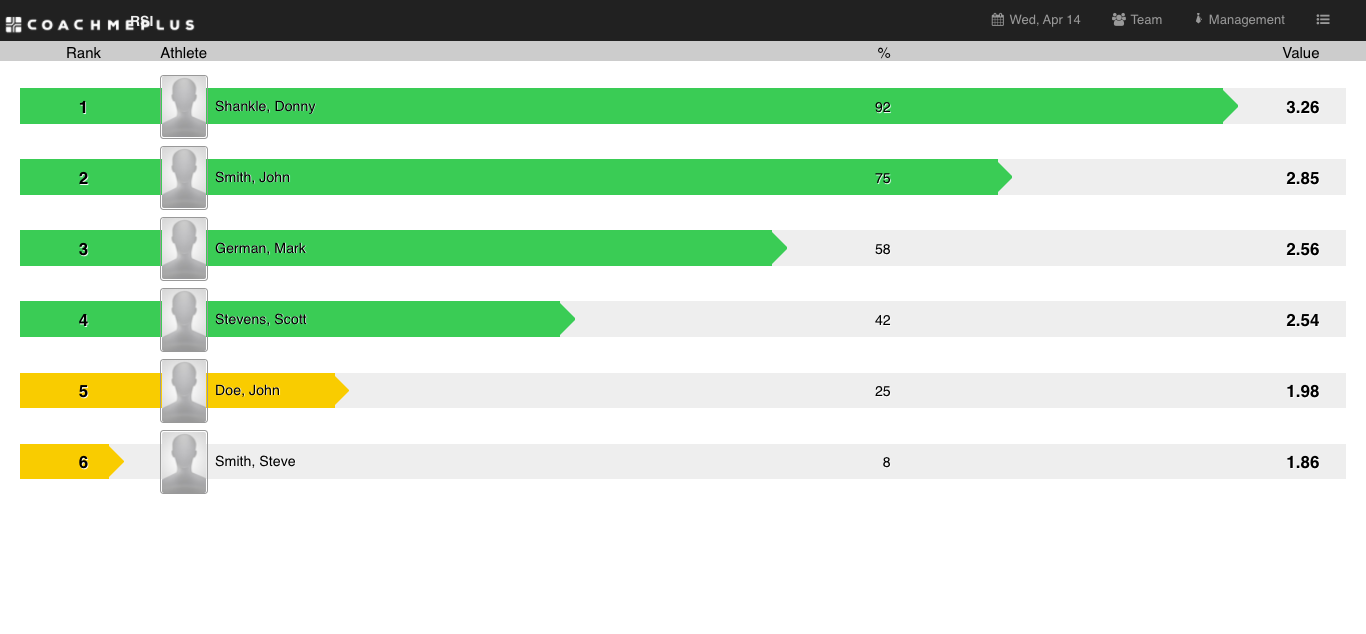
RSI and RSImod do not always align within athletes (1), likely due to skill and familiarization issues in drop jumps, so we will use the simpler version here.
This “problem” is a typical one because as Kipp shows, RSImod essentially represents an athlete’s explosiveness (2), a training objective in most sports. We will approach the problem with three strategies, based on the likelihood that they need to be addressed.
The first approach and the “simplest” is to increase the relative strength of the athlete. As Cormie showed, in weak athletes, increasing strength will also increase explosiveness (3). You can pick your measure of choice, whether it be 1RM in squat, trap bar deadlift, split squat, or peak relative force in the isometric midthigh pull. Increasing strength per unit of body mass will make athletes more explosive.
REACTIVE STRENGTH INDEX LEADERBOARD:

The third approach to improving RSImod will come from a load-management strategy. We know that RSImod is one of the more sensitive metrics to increased loading in an athlete, being reduced up to 72hrs after exhaustive exercise (5, 6) and during periods of overreaching (7). The lowest hanging fruit as a strength coach and sport scientist is to look at the accumulated load/stress of the athlete. Ask yourself if it’s time for that athlete to take a break. A 3-4 day unloading period (maybe longer if overreaching has been extensive) can make for very sharp increases in RSImod. This represents a peaking or tapering strategy, so it’s important to remember, you can’t taper what you don’t have.
Using regular jump monitoring, whether with force plates, jump mats, lasers, or cameras, can provide the resolution required to make important decisions. This applies not only around workout programming strategies, but also with the overall load management of athletes. RSImod is a good metric to evaluate explosiveness. When looking for a boost: get STRONG, learn how to be REACTIVE, and be fresh if you want to SHOW IT OFF!
REACTIVE STRENGTH INDEX – RADAR PLOT


Recent Comments